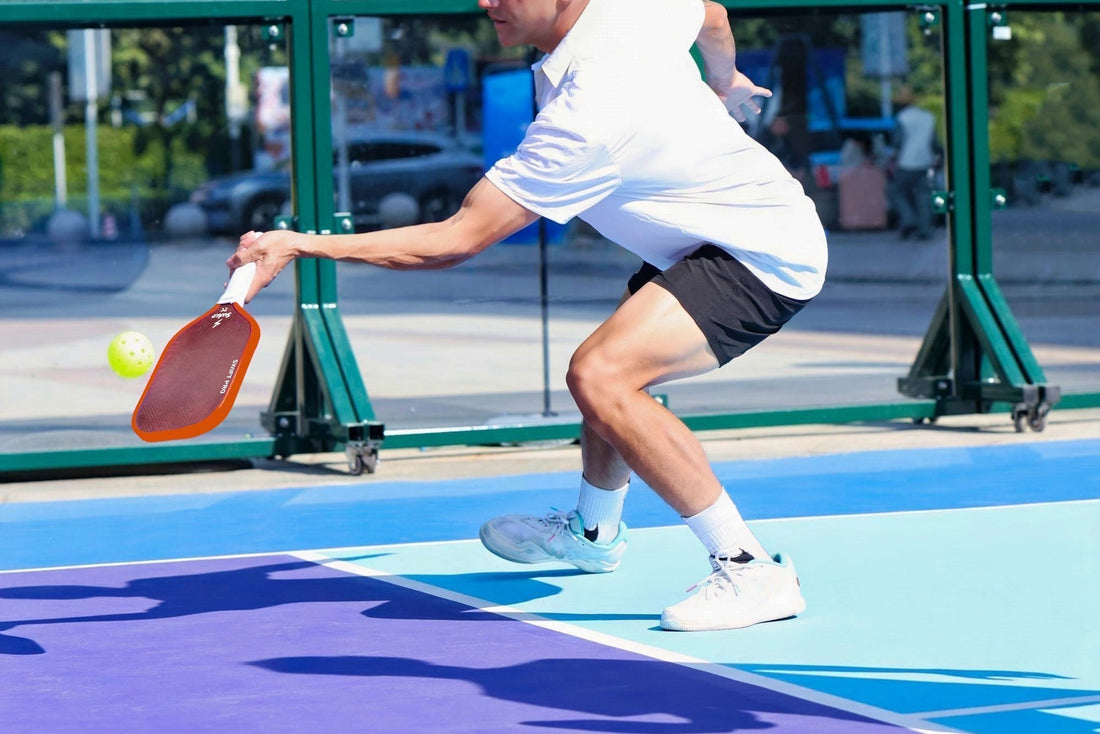Mastering Dinking in Pickleball: The Key to Dominating the Kitchen
If you're looking to elevate your pickleball game, mastering the art of dinking is non-negotiable. It's the cornerstone of effective kitchen play and the skill that separates casual players from the pros. Let’s dive into how you can refine your dinking game and gain the upper hand at the net.
What is Dinking?
Dinking is a soft, controlled shot performed near the non-volley zone (NVZ), or kitchen. The goal is to hit the ball so it just clears the net and lands in your opponent’s kitchen, forcing them to hit upwards. This neutralizes power players and opens opportunities for attack.
Why Dinking is Crucial
Pickleball isn’t always about hitting hard; it’s about smart strategy and consistency. Dinking slows the game down, disrupts your opponent’s rhythm, and creates opportunities to capitalize on their mistakes. A well-executed dink can:
-
Keep your opponents pinned at the kitchen line.
-
Force errors due to low-percentage shots.
-
Set up an offensive put-away.
The Fundamentals of a Perfect Dink
1. Grip and Stance
Use a continental grip for better control and versatility. Stay low with your knees bent, and position your paddle in front of you. This allows quick reactions and smooth transitions between forehand and backhand dinks.
2. Paddle Angle and Contact Point
Keep your paddle face open and aim for a gentle, upward motion. Strike the ball just in front of your body for maximum control. Avoid a chopping motion, as it reduces consistency.
3. Soft Hands
Relax your grip to absorb the ball’s impact. Think of it like catching an egg—you want to cradle the ball gently, not swat at it.
4. Placement Over Power
Focus on accuracy rather than force. Aim for your opponent’s feet or the sidelines to make it harder for them to return with precision.
Advanced Dinking Strategies
1. Move Them Around
Keep your opponents guessing by varying your dink placement. Alternate between forehand and backhand sides to exploit weaknesses and create openings.
2. Use Height to Your Advantage
A higher dink can give you time to reset, while a low, fast dink can pressure your opponent. Mix up the height to keep them off balance.
3. Recognize Attackable Dinks
Stay alert for poorly executed dinks that pop up too high. These are prime opportunities for a put-away or a speed-up to gain the upper hand.
4. Engage in “Dink Wars” with Purpose
Prolonged dink exchanges are common in high-level play. Stay patient and wait for your opponent to make the first mistake. Remember, the goal is to create an opening—not to win every dink outright.
Common Mistakes to Avoid
-
Overhitting: Too much power defeats the purpose of a dink.
-
Leaning In: Overcommitting your body weight can leave you vulnerable to a lob or quick counter.
-
Impatience: Forcing a put-away when it’s not there often leads to unforced errors.
Drills to Sharpen Your Dinking Skills
1. Crosscourt Dinking
Practice dinking diagonally from one kitchen corner to the other. This helps improve control and angles.
2. Target Practice
Place cones or markers in your opponent’s kitchen and aim to land dinks in those spots. Focus on precision.
3. Dink and Reset
Work on recovering to a ready position after each dink. This drill builds muscle memory and keeps you prepared for the next shot.
Final Thoughts
Mastering dinking requires patience, practice, and strategic thinking. It’s not the flashiest part of pickleball, but it’s one of the most effective tools in a pro’s arsenal. Commit to refining your dinks, and you’ll find yourself controlling points, frustrating opponents, and winning more games. Remember, the kitchen is your battlefield—dominate it.




